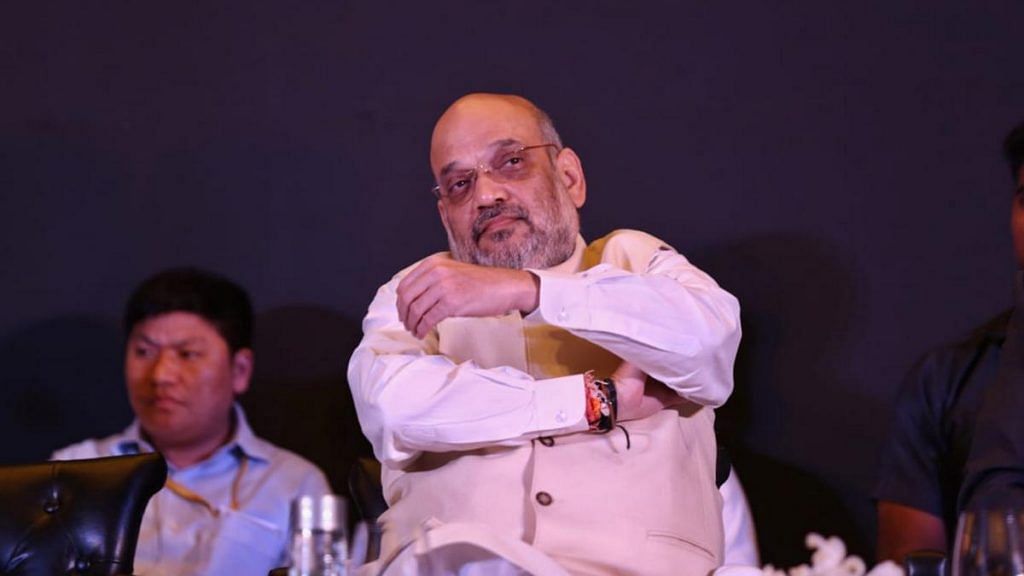Home Minister Amit Shah’s constant demand for a countrywide NRC has deservedly received plenty of criticism from a constitutional and ethical standpoint, though this hasn’t stopped him from coming up with fresh promises. On Monday, Shah said he will ensure all infiltrators are out of India by 2024. In all this, what many have not talked about is the practicality of such a ridiculous proposal, which I would rank lower than Donald Trump’s desire to build a wall along the US-Mexico border. Many conservatives led by their ideologies might support decisions like NRC and border wall, but their economics cannot be denied by anyone.
Assam proved to be an inconvenient experiment, showing us what the result of a nationwide exercise could be. It took over four years and reportedly cost the central government Rs 1,600 crore to update the National Register of Citizens (NRC) in Assam. More than 55,000 people were employed, and more than 3.2 crore people from Assam applied to register themselves.
There is no official data on what it cost the average person to find the documents, fill in the application form, travel, stand in queue for hours, register themselves, and go through a verification process where many people were called over multiple times to verify their citizenship. In several cases, the entire family had to travel long distances. Initially, 40 lakh people were excluded from the NRC list, which meant more verification rounds. All this amounted to a gigantic proportion of loss of time, money and productivity.
Also read: Mandate against NRC — Mamata says after winning Bengal BJP chief’s home turf, 2 other seats
Another demonetisation ‘masterstroke’
If only the Modi government had the example of demonetisation to know how disastrous an ill-planned decision can be.
What made the 2016 demonetisation utterly useless is how stupid the idea itself was and how arbitrary the process. In November 2016, many bankers reportedly converted “black money” into white at a commission, which eventually meant that nearly all the cash returned to the banking system. NRC is very similar in these regards. Replace bankers with verification officers with the power to include or exclude someone from the list. The idea that some or many officers worked at a commission to randomly include or exclude people is pretty feasible. So, it’s not a surprise that nearly everyone was disappointed with the final NRC list. Some cried over the exclusion of Hindus; others were hurt over the number of illegal Muslim immigrants being so less.
What makes NRC an even bigger blunder than demonetisation is that it doesn’t stop with the declaration of the final list. That is just the first part of the process. The bigger problem becomes clear when you think about the excluded people – what will happen to them? where will they go?
The immediate answer from someone who supports the NRC is “send them back to Bangladesh.” This is as ridiculous as Trump suggesting Mexico will pay for the wall. What’s in it for Mexico? Just like that, what’s in it for Bangladesh? Why would it accept “illegal immigrants” unless it sees some kind of political or financial benefit? The Sheikh Hasina government has already said Bangladesh will not take in any deportees. The Modi government understands the difficulty, which is why it is going for the second option – detention centres.
Also read: BJP could be shrinking politically but is winning big time ideologically
The ‘solution’ is a huge problem
Detention centres raise several ethical, moral and constitutional concerns. But let’s focus more on how practical they are since there is already a significant amount of support among the public to house ‘illegal immigrants’ in these camps.
Assam’s first detention centre is being constructed at a cost of Rs 46 crore spread over 2.5 hectares and will house 3,000 people. But there are 19 lakh people excluded from the final NRC. Here is the math: the cost of simply building detention centres for all the excluded people will be upwards of Rs 27,000 crore. And this is just in Assam. Imagine the cost of constructing detention centres all over India. Also, how many detention centres would the Modi government construct?
Moreover, this cost doesn’t include maintenance, food, shelter, and the upkeep of these centres. We are easily looking at a figure in lakhs of crores of rupees. The same amount of money could be used to construct thousands of schools, hospitals and fund slum rehabilitation programmes, which would actually benefit Indians.
Also read: Why Modi’s India looks eerily similar to the one under British after 1857 revolt
Where the money should be spent
A typical question at this point will be: ‘But what about the illegal immigrants?’ ‘How should they be controlled?’ The solution is a lot simpler than what many realise; the only problem is that it’s politically not marketable – better border control and increase of foreign aid to countries like Bangladesh.
We must directly deal with the influences that make people leave their home country. Money is better spent in setting up skill development and vocational training centres, schools and universities, which will make people employable. Not only will it foster economic development in both India and Bangladesh, but it will also improve the relationship with our neighbouring countries overall, which will make them more compliant towards immigration issues. Thus, improving lives across the border prevents people from illegally crossing over – all the while, costing the same or less amount of money.
The author is an activist and YouTuber. Views are personal.
